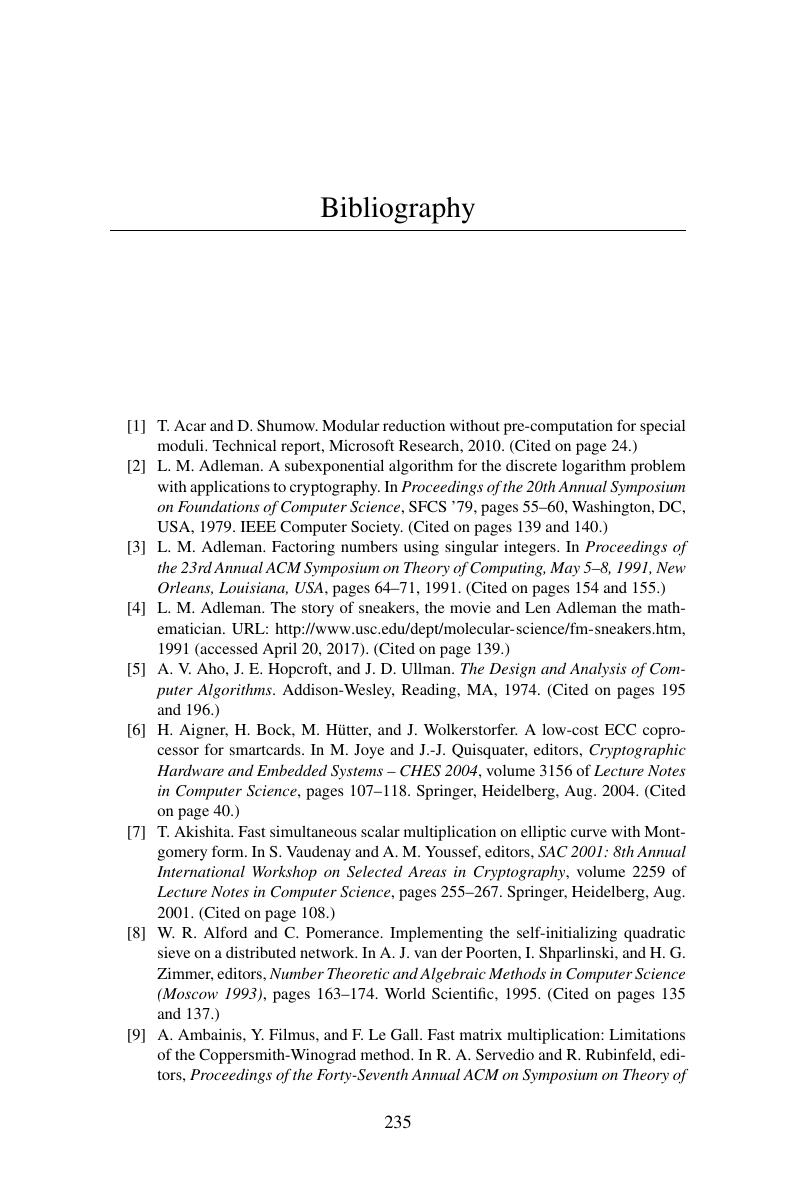Book contents
- Frontmatter
- Contents
- List of Contributors
- Preface
- 1 Introduction
- 2 Montgomery Arithmetic from a Software Perspective
- 3 Hardware Aspects of Montgomery Modular Multiplication
- 4 Montgomery Curves and the Montgomery Ladder
- 5 General Purpose Integer Factoring
- 6 Polynomial Selection for the Number Field Sieve
- 7 The Block Lanczos Algorithm
- 8 FFT Extension for Algebraic-Group Factorization Algorithms
- 9 Cryptographic Pairings
- Bibliography
- Subject Index
- References
Bibliography
Published online by Cambridge University Press: 25 October 2017
- Frontmatter
- Contents
- List of Contributors
- Preface
- 1 Introduction
- 2 Montgomery Arithmetic from a Software Perspective
- 3 Hardware Aspects of Montgomery Modular Multiplication
- 4 Montgomery Curves and the Montgomery Ladder
- 5 General Purpose Integer Factoring
- 6 Polynomial Selection for the Number Field Sieve
- 7 The Block Lanczos Algorithm
- 8 FFT Extension for Algebraic-Group Factorization Algorithms
- 9 Cryptographic Pairings
- Bibliography
- Subject Index
- References
Summary

Information
- Type
- Chapter
- Information
- Publisher: Cambridge University PressPrint publication year: 2017
